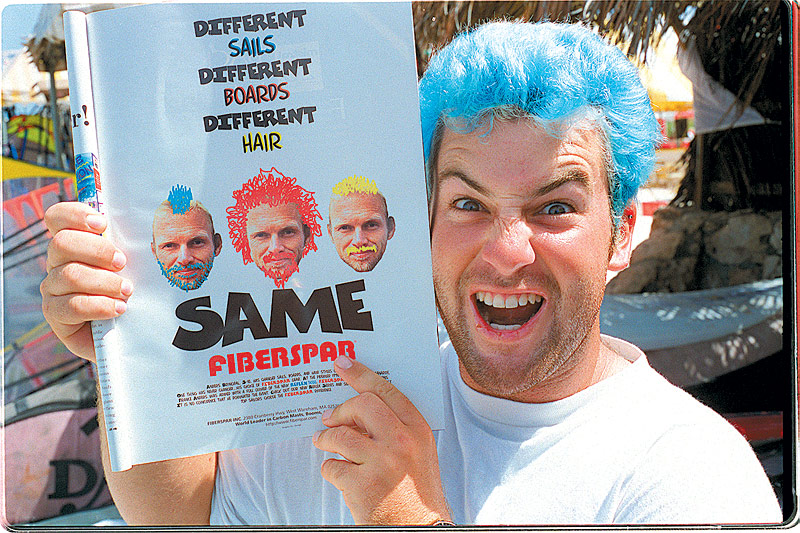
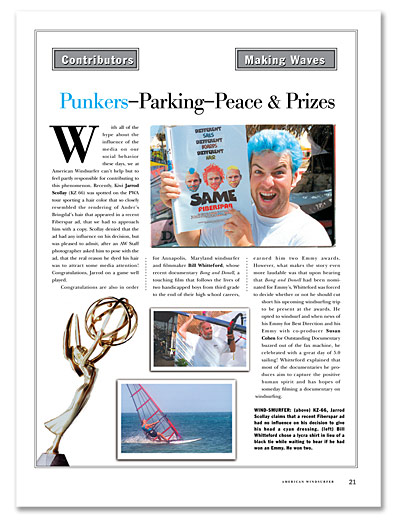
WITH ALL OF THE HYPE about the influence of the media on our social behavior these days, we at American Windsurfer can’t help but to feel partly responsible for contributing to this phenomenon. Recently, Kiwi Jarrod Scollay (KZ 66) was spotted on the PWA tour sporting a hair color that so closely resembled the rendering of Ander’s Bringdal’s hair that appeared in a recent Fiberspar ad, that we had to approach him with a copy. Scollay denied that the ad had any influence on his decision, but was pleased to admit, after an AW Staff photographer asked him to pose with the ad, that the real reason he dyed his hair was to attract some media attention! Congratulations, Jarrod on a game well played.

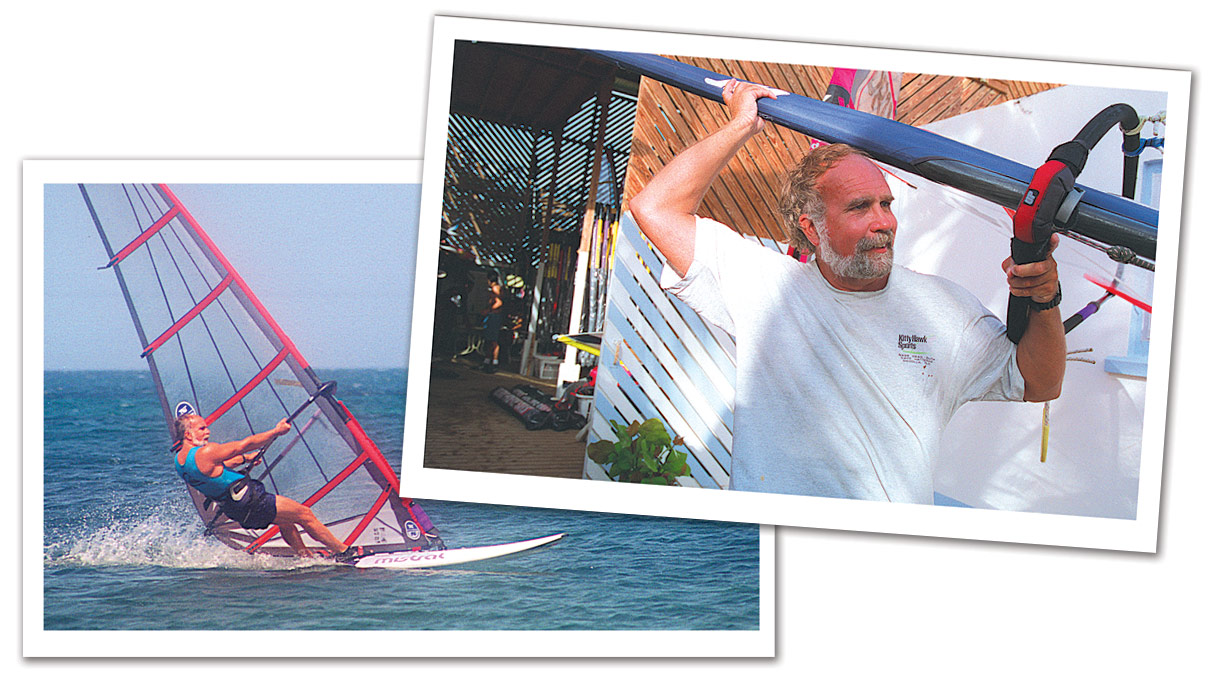
Congratulations are also in order for Annapolis, Maryland windsurfer and filmmaker Bill Whitteford, whose recent documentary Bong and Donell, a touching film that follows the lives of two handicapped boys from third grade to the end of their high school careers, earned him two Emmy awards. However, what makes the story even more laudable was that upon hearing that Bong and Donell had been nominated for Emmy’s, Whitteford was forced to decide whether or not he should cut short his upcoming windsurfing trip to be present at the awards. He opted to windsurf and when news of his Emmy for Best Direction and his Emmy with co-producer Susan Cohen for Outstanding Documentary buzzed out of the fax machine, he celebrated with a great day of 5.0 sailing! Whitteford explained that most of the documentaries he produces aim to capture the positive human spirit and has hopes of someday filming a documentary on windsurfing.
Advertisement
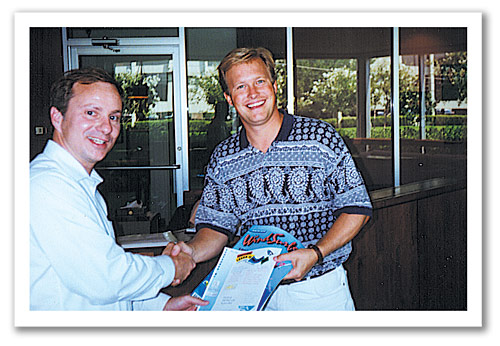
Members of the Austin Windsurf Club of Austin, Texas are using the spirit of windsurfing to take steps to alleviate a possible conflict between windsurfers and town and county officials over access to Windy Point on Lake Travis by inviting the officials to learn to windsurf. Proposed shorter hours, increased fees, and reduced parking have forced club members to become activists for access, but instead of taking a belligerent stance, they have decided to educate rather than debate to develop a better relationship with the government officials.
The Austin Windsurf Club is sponsoring a “Learn to Windsurf” day that is being set up to provide free lessons to members of the Commissioners Court, County Parks Staff and the local TV, radio and press media people. According to club president Gil Yetter, “I look forward to bringing the public into the sport at every possible occasion because I believe that the sport has only positive aspects which promote health, well being, and a unique sense of camaraderie based on mutual respect between fellow athletes.” It should develop a respect between citizens and local government too! The lessons will be provided by trained and certified instructors who are members of the club.
In the spirit of using lessons learned to create something new, we recently received a phone call from Hamburg, Germany from a man by the name of Hans Upton. Hans and his wife Maria Bontempo Upton have recently put a product on the market called Windline that is a patented hand held sail to propel a person on inline skates, or ice skates. (Take time to read their ad on page 23, it’s an interesting story.) With the help of Oceanic Sails’ Dave Russell, Hans and Maria are producing the seamless sails in a few different sizes. What is especially fascinating about Windline is how the product developed.
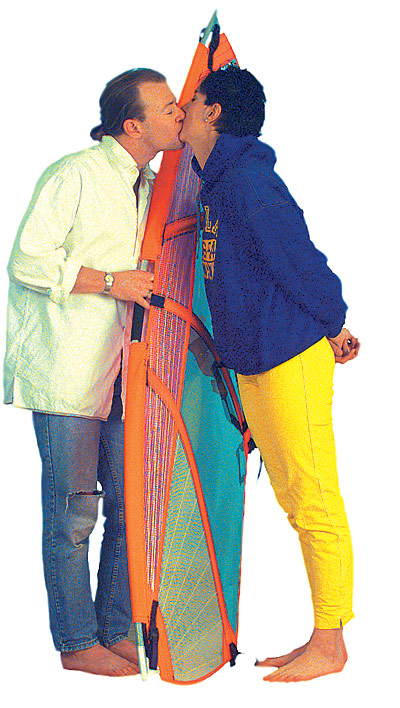
As a student at UCLA, Hans began experimenting with non-Newtonian fluids in an attempt to reduce drag on rowing shells. It was then that he got the idea to test the polymer on windsurfers. After a few tests in a ship’s model tank, Hans concluded that using a polymer popularly used by oil companies for efficient oil recovery, he should be able to reduce drag on the hull of a windsurfer by up to 25%– a possibility that suddenly opened his eyes to a world of potential within the windsurfing market. As wax is to skis, his patented Drag-Aid, an additive tape that releases polymer into the boundary zone to reduce drag, would be to windsurfers. So Hans and Maria signed up a few pros to perform some tests with Drag-Aid. What they found was that it was successful in getting a board to plane faster, but unfortunately, the overall margin of top end speed was virtually unnoticeable. The conclusion they reached was that on a sailboard, the drag on the fin is so significant that the effect of cutting drag on the bottom surface of the board is minimal.
Advertisement
So for Hans and Maria, it was back to the drawing board. But back with new ideas. Now that they had worked with windsurfers, the two began to consider the possibilities of increasing speed on things with very little drag or resistance. So the idea of the Windline was born. Since inline skate wheels encounter very little resistance, a hand held sail design seemed like a perfect complement. So now in addition to running his own business sanding and sealing hard wood floors, Hans and Maria spend their time building and testing new prototypes of Windlines to reach new levels of windblown thrill on land!

